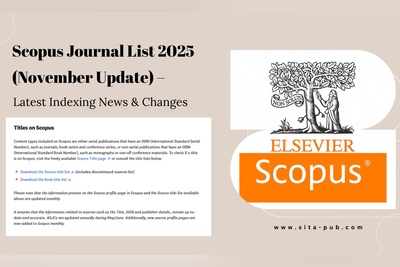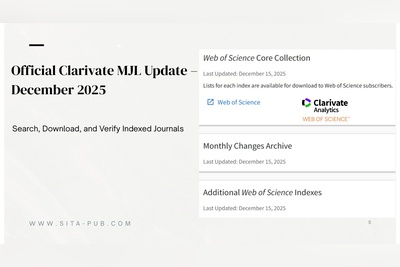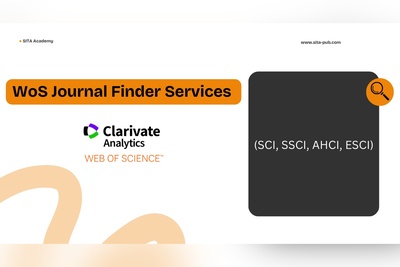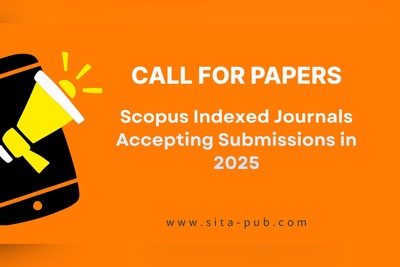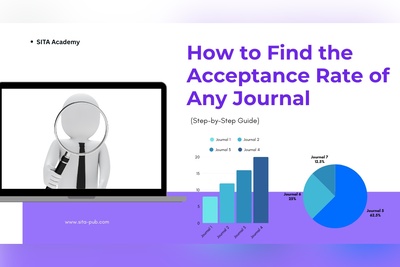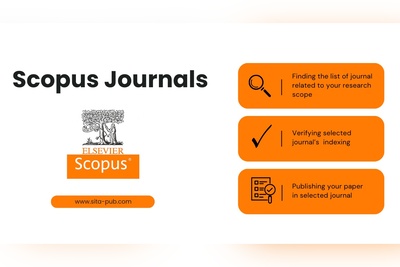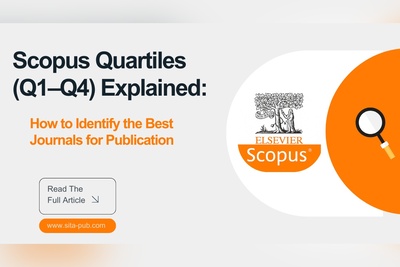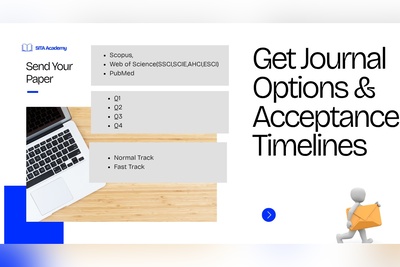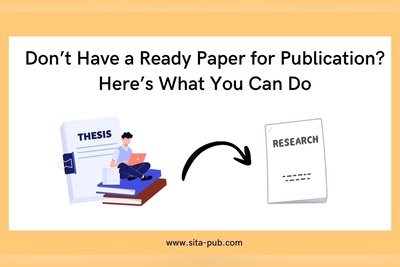Full Publication Assistance: Journal Selection, Editing, Formatting, and Submission
Do you want to publish your paper in leading international journals? Discover how research centers guide you through journal selection, editing, formatting & submission.
- Why Full Publication Assistance Matters
- Journal Selection: Finding the Perfect Fit
- Editing: Perfecting the Language and Style
- Formatting: Aligning with Journal Guidelines
- Submission: Navigating the Technical Process
- Beyond Submission: Handling Revisions and Resubmissions
- The Value of Partnering with a Research Support Center
- SITA Academy | Research Support Center
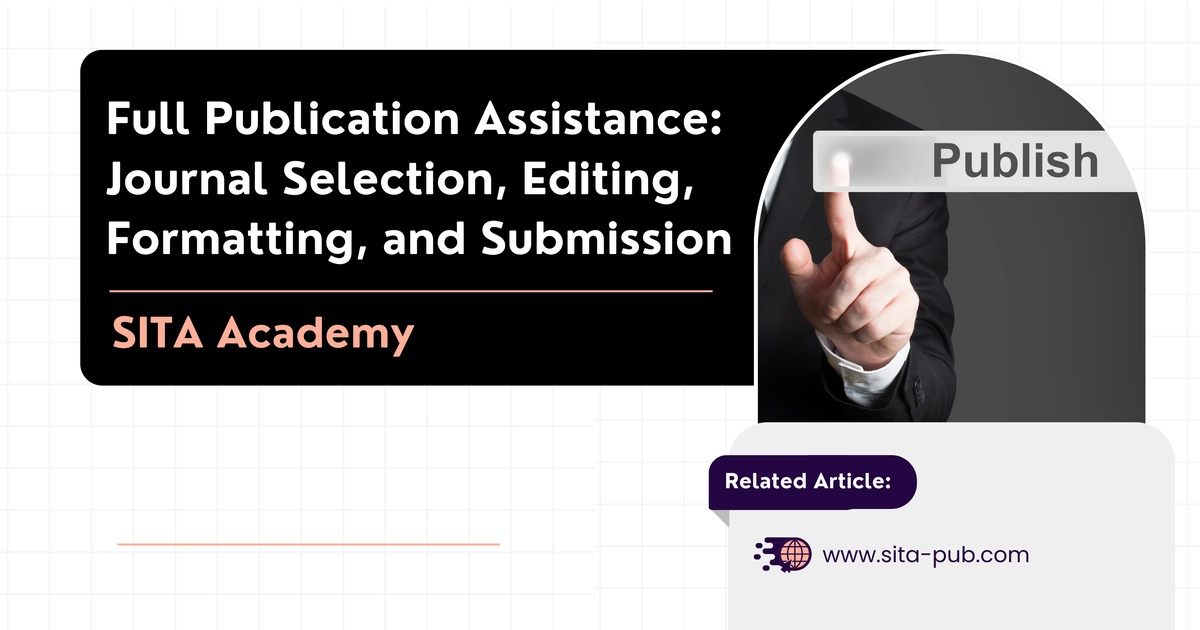
From graduate students aiming to complete their thesis to seasoned academics seeking tenure or international recognition, publishing in indexed journals (Scopus, Web of Science, PubMed, etc.) plays a decisive role in academic growth.
But while research itself is challenging, preparing a manuscript for publication is often even harder. Selecting the right journal, ensuring academic English quality, formatting according to strict guidelines, and navigating online submission systems can overwhelm even experienced researchers. This is where full publication assistance services become invaluable.
In this article, we’ll explore how comprehensive support—covering journal selection, editing, formatting, and submission—helps maximize your chances of success.
Why Full Publication Assistance Matters
Many strong research papers face rejection not because of poor science, but due to technical reasons such as:
Submitting to a journal outside the paper’s scope.
Weak academic English and unclear writing.
Failure to follow formatting and referencing guidelines.
Poorly prepared figures, tables, or supplementary files.
Incorrect or incomplete submission materials.
These issues cost researchers months of delays and, in some cases, discourage them from resubmitting at all. A full-service support system ensures that a paper is technically flawless, strategically positioned, and submitted with the highest chance of acceptance.
1. Journal Selection: Finding the Perfect Fit
Choosing the right journal is the most important—and often the most overlooked—step in the publication process.
What makes journal selection so challenging?
Thousands of indexed journals exist across disciplines.
Each journal has a unique scope, audience, and acceptance rate.
Institutions may require Scopus, ISI (Web of Science), or PubMed indexing.
Journal quartiles (Q1, Q2, Q3, Q4) reflect prestige and impact.
How professionals help with journal selection:
Scope matching: Ensuring your paper aligns with the journal’s aims and recent publications.
Quartile targeting: Matching your manuscript quality with a realistic quartile level.
Indexing check: Confirming whether the journal is Scopus, ISI, or PubMed indexed.
Timeline considerations: Recommending journals with fast or standard review cycles.
Predatory journal avoidance: Filtering out fake or low-quality journals.
Example: A strong paper with novel results in renewable energy may aim for a Q1 sustainability journal, while a case study on a local application may be better suited to a reputable Q2 regional energy journal.
2. Editing: Perfecting the Language and Style
Even groundbreaking research can be rejected if the language is unclear. Native-level academic English is now an expectation in high-impact journals.
Common issues in unedited papers:
Grammatical errors and awkward phrasing.
Misuse of technical terminology.
Overly complex sentences that confuse readers.
Lack of flow and logical structure.
What professional editing offers:
Translation support: Converting manuscripts from Arabic (or other languages) into polished English suitable for publication.
Native English editing: Ensuring clarity, fluency, and correctness.
Technical accuracy: Refining scientific terminology.
Journal-specific style: Adapting tone and structure to target journals.
Pro tip: Top researchers never submit unedited manuscripts; they invest in professional editing to eliminate any language barrier between their ideas and reviewers.
3. Formatting: Aligning with Journal Guidelines
Every journal has strict submission guidelines, which often include:
Word limits and article structure (IMRAD: Introduction, Methods, Results, Discussion).
Figure and table specifications (resolution, file type, legends).
Abstract and keyword requirements.
Ethical approvals (where applicable).
Failure to follow guidelines is one of the top reasons for desk rejection—when the editor rejects a paper without even sending it for peer review.
How formatting assistance helps:
Ensures the manuscript follows exact author guidelines.
Standardizes references with correct style and DOI links.
Prepares high-quality figures and tables.
Checks supplementary files and appendices.
Creates a ready-to-submit cover letter.
Example: If a journal requires figures in TIFF format at 300 dpi but you submit JPEGs, your paper may be returned before review. A formatting service prevents these setbacks.
4. Submission: Navigating the Technical Process
Submission portals like ScholarOne and Editorial Manager can be intimidating. Each step requires precise inputs, from metadata entry to cover letters and suggested reviewers.
Challenges researchers face in submission:
Uploading files in incorrect formats.
Missing required ethical statements or funding disclosures.
Selecting inappropriate article categories.
Drafting weak or generic cover letters.
Professional submission support includes:
Preparing all files (main text, figures, supplementary data) in correct format.
Writing a strong cover letter that highlights novelty and journal fit.
Completing metadata fields (keywords, abstracts, affiliations) correctly.
Suggesting reviewers (if requested by the journal).
Tracking submission progress and providing updates.
Pro tip: A well-crafted cover letter can make a powerful first impression on editors, increasing the chances that your paper gets sent for peer review.
5. Beyond Submission: Handling Revisions and Resubmissions
The process doesn’t end with submission. Most papers go through at least one round of revision. Full publication services often extend to:
Reviewer response drafting.
Reformatting revised manuscripts.
Managing resubmission to alternative journals if rejected.
This ensures continuity and saves researchers from the cycle of starting over after each rejection.
6. The Value of Partnering with a Research Support Center
Top researchers rarely do everything alone. Many rely on comprehensive research support centers that provide:
Manuscript diagnostics: Assessing novelty and contribution.
Journal shortlisting: Recommending 3–5 suitable journals.
Language services: Translation, editing, and proofreading.
Technical compliance: Formatting, figure preparation, ethical approvals.
Submission management: Handling online systems and correspondence.
Plan B and C: Pre-approved backup journals to avoid delays.

This approach saves time, reduces rejection risk, and ensures that your research reaches the right audience.
Final Thoughts
Publishing research should showcase your scientific contributions, not get lost in formatting errors, language issues, or journal mismatches. With full publication assistance—journal selection, editing, formatting, and submission—you can focus on your research while experts handle the technical complexities.
This support is not about bypassing peer review—it’s about giving your paper the best possible chance of success in competitive, reputable journals.
SITA Academy | Research Support Center
At SITA Academy, we provide end-to-end publication support:
Expert journal selection tailored to your manuscript.
Native English editing and professional translation.
Formatting to the exact specifications of your target journal.
Complete submission and tracking until decision.
We’ll match your paper with the most suitable journal and manage the entire publication process on your behalf.
Verified Contact Channels
If you have any questions, inquiries, or would like to learn more about our services, please don't hesitate to reach out to us. Our dedicated team is ready to assist you.





